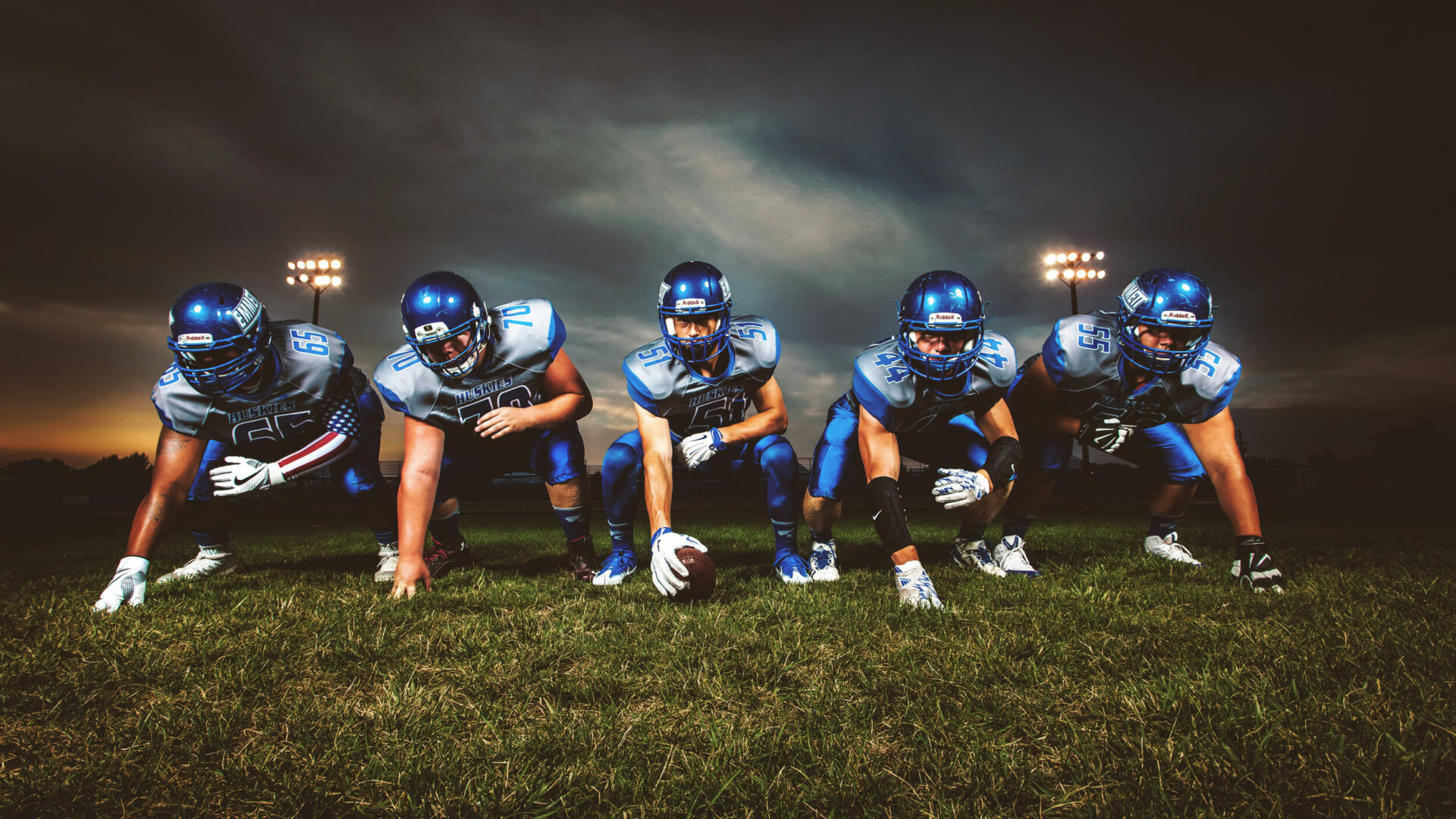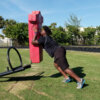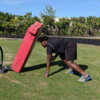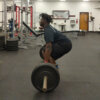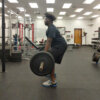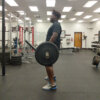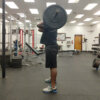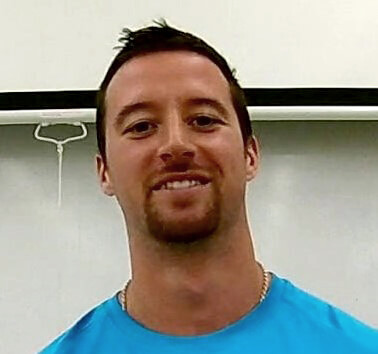Designing training programs for athletes and athletic teams can be a daunting task for a novice or beginner in the field. It can also be a challenge for coaches who don’t have the training that a strength and conditioning coach may have. Most high school teams and lower level college athletic programs have coaches with very limited knowledge of strength and conditioning principles. Often times these teams rely on the head coach or a position coach to perform double duty as the strength and conditioning coach. As a coach who is put in this situation, how do you use strength and conditioning principles, bioenergetic systems of energy, and biomechanics of sports skills to design training programs for your athletes?
First, we should understand a basic principle you can apply for any goal. That principle is the principle of specificity. The principle of specificity loosely means you should train with the end goal in mind. For example, if you are a powerlifter, training like a marathon runner isn’t specific to your goal and will actually be detrimental to your performance. Obviously, this principle requires you to understand what your end goal is. The more specific you want your training to be, the more specific your end goal needs to be.
Let’s look at a sports example and analyze the skill sets required to help make things more clear. American football is one of the most popular sports in the United States today and is a great example of how the principle of specificity should be applied. American football has a wide array of positions that involve very different skill sets. It is easy to see when watching a game that a 350-pound lineman requires a much different skill set than a 200-pound running back or a 185-pound defensive back. So how can we achieve training goals specific to the demands of our position during offseason training and during in-season practice? We need to first look at what each position is required to do throughout the course of a game.
If you were to show up at nearly any high school during training camp or offseason workouts, I feel extremely confident saying that you would see football coaches all over the US requiring athletes to perform mile runs as conditioning. This is the exact opposite stimulus required for this specific sport. How long is an average NFL play? The average NFL play is roughly 3-5 seconds in duration. What relevance does the ability to run an 8-minutes have to do with performing 3-5 second 100% maximum effort bursts? The answer… absolutely nothing.
Exercise physiology tells us that there are three main energy systems used to perform all movement. These systems include the phosphagen system (short term energy), glycolysis (moderate energy), and the oxidative system (long term energy). The phosphagen energy system will act first and provide energy for about 10-15 seconds. Following this, glycolysis will take over and last roughly 2-5 minutes, depending on your conditioning level. Lastly, the oxidative system will be the main method for long term energy production. We do not need to get into specifics of each system but we should understand that our training needs to replicate the energy system used during competition because how we train, dictates our bodies adaptation to training. Training the phosphagen system and the fast glycolytic system has the most carry over to our example, American football. Not only this, but when we train outside of our required energy system, we become less and less efficient at making the adaptations needed to become better at our sport. [2] A meta-analysis by Wilson et al. 2012 demonstrated endurance training and concurrent training, which is the simultaneous inclusion of both resistance training and endurance training, has significantly negative effects on the ability to produce strength in both the lower body and upper body. [2]

In addition to knowing that the average play lasts roughly 3-5 seconds in duration, we also know that the play clock is set to 40 seconds in the NFL. Meaning that for every 40 seconds of rest, there is approximately 3-5 seconds of exercise. If we wanted to perform conditioning that would replicate an NFL play, one example might be to have our athletes perform sprints for 3-5 seconds (30-50 yards) and rest for 30-40 seconds between. At this point, we should be able to see that performing sprints in an interval fashion has much more application to football than mile runs.
To conclude the bioenergetic aspect of this topic: observe your sport and position, understand the length of time the athlete must perform the skill and how often the athlete must perform this skill. Then replicate those concepts in your training. Training with the end goal in mind will make you more efficient come game time.
In addition to bioenergetics, biomechanics, the study of human movement, plays a huge role in exercise selection and training. When deciding what exercises to include or not to include in your training program, you’ll need to analyze the movement patterns of the sport and position that you are programming for. What does this position require to be successful and how can we replicate those movements within the weight room? Start by:
- Determine objectives of skill
The most common objectives of any athlete include speed (100-meter sprint), accuracy (quarterback and pitcher throwing), form (gymnastics and figure skating), and distance (place kicking and shot put). Depending on your sport or the position within your sport, you may need one or more of these objectives. Objectives help to determine what mechanical principles need to be applied to improve the sport skill. For example, improving speed is a combination of maximal force production and power production. A training program designed to improve speed would require an individual to increase maximal strength and the speed at which the force is able to be produced. Training heavy squats followed by performing box jumps might be one example of this. - Determine key movement patterns involved in skill
What actions are performed over and over again in your sport? When analyzing the key movement patterns of a football lineman we can begin by observing the starting technique, often a 3-point stance. This is followed up by an explosive burst off the line and attempting to use powerful arms and legs to block an opponent. This skill will be analyzed in depth a little later in the article. Each sport (and sometimes positions within sports, like football) have their own unique movement patterns that are performed over and over again. Study the movements required and what parts of the body are moving and how. This information will give you ideas of what exercises might be most applicable to your sport. - Study superior performances
By studying elite athletes performing their required skills, we are able to gain a better understanding of proper movement patterns during game like conditions. All professional technique has common features which are independent of body type. So even if you a 6’0 210 lbs. high school lineman the technique should be the same as a 6’5 325 lbs. NFL lineman. In addition, if you are able to use video analysis with your athletes to gain a greater understanding of their movement patterns, by all means, please do so. Many people learn better through visual critique rather than verbal.
The reason biomechanics and the points of emphasis listed above matter is because they help to make our training more specific, again coming back to the principle of specificity. Let’s take a closer look at our lineman example again and analyze the key movement patterns used in competition and how we might attempt to replicate those movements with exercise training.
Let’s look the starting position and goal end position of a lineman, as seen in picture 1 and 2. We know that offensive lineman mostly begins each play in what is called a 3-point stance. A 3-point stance begins with hip, knee, and ankle flexion and a stance low to the ground. Following the snap, lineman must produce an enormous amount of lower body power to overcome their massive inertia. Once out of their stance, the arms must also explode forward exerting a force onto their opponent. As we begin to analyze the technique a lineman uses to block an opponent, we can see that as the play progresses from start to end hip, knee, and ankle flexion becomes hip, knee, and ankle extension, which is what we call “triple extension”.
Triple extension can be replicated in the weight room by performing Olympic weightlifting movements such as the snatch and clean and jerk and their variations, as seen in the above pictures. There are many other options available to train the triple extension movement that don’t include the Olympic lifts and they may be easier to coach to various athletes – Olympic weightlifting is just the most common example used for triple extension. A movement that may be even more specific and less technical is the prowler (sled) push. These type of movements accomplish multiple aspects of what lineman are required to do during a game: explosive movement from a set position followed by exerting as much force as possible onto an object or opponent. Choosing exercises that require less time to master such as a prowler push or even a trap bar deadlift compared to Olympic lifts allow athletes to quickly begin to train and progressively overload the exercise which in turn makes our athletes stronger quicker. This is not to say that Olympic movements should not be taught, it’s just simply an observation that it will take much more time to master those movements before you are able to overload the exercises and increase strength.
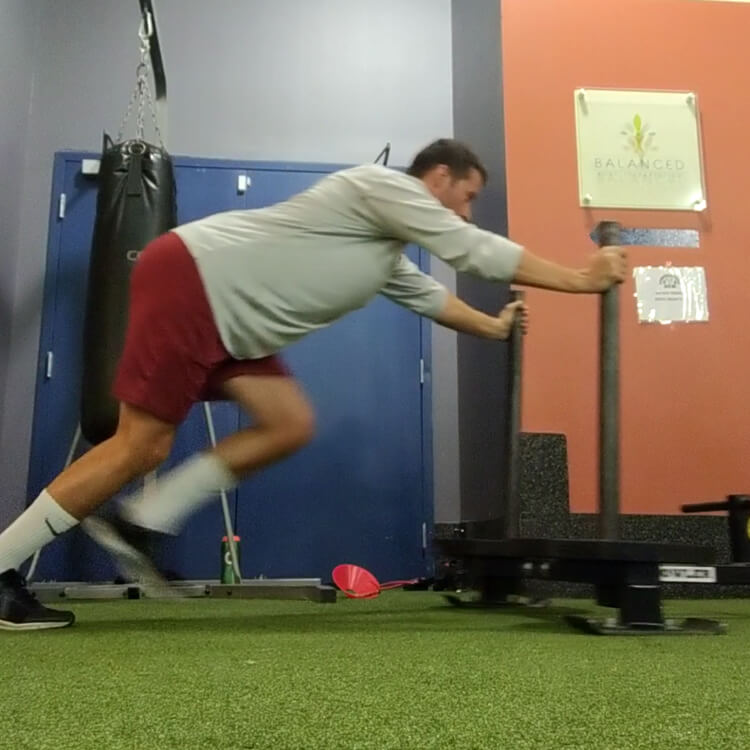
So far, we have analyzed the bioenergetic aspect of your sport and the biomechanical principles of movement related to your sport and position and have chosen exercises based off that, it’s time to apply this information to a training program. Performing the correct exercises but with incorrect exercise variables (sets, reps, intensity, rest intervals, etc.) at the wrong time of the year, will still will not maximize results. So how can you get started?
First, we need to know what phase of competition you are currently in. Let’s assume for sport specific training there are four phases: offseason, preseason, in-season, and postseason. Offseason will be the bulk of the duration during the time when competition is not taking place. Preseason is the time period directly prior to beginning an in-season or competition phase. The in-season phase is training that takes place during the sport season. Postseason will be defined as the period of time immediately following the conclusion of the competitive season.
To maximize training throughout these four phases of competition, a periodized training scheme will be necessary. In short, periodized training just means that you plan to manipulate the variables of training to maximize your training adaptations. There are many forms of periodization but all focus around the manipulation of volume, intensity, and technique.
As a quick refresher:
- Volume = repetition X sets X load (load – weight lifted)
- Intensity – percentage of maximum effort
- Technique – for our purposes, we will consider this to be time focused on sport specific skills such as blocking technique rather weight room exercises such as squatting
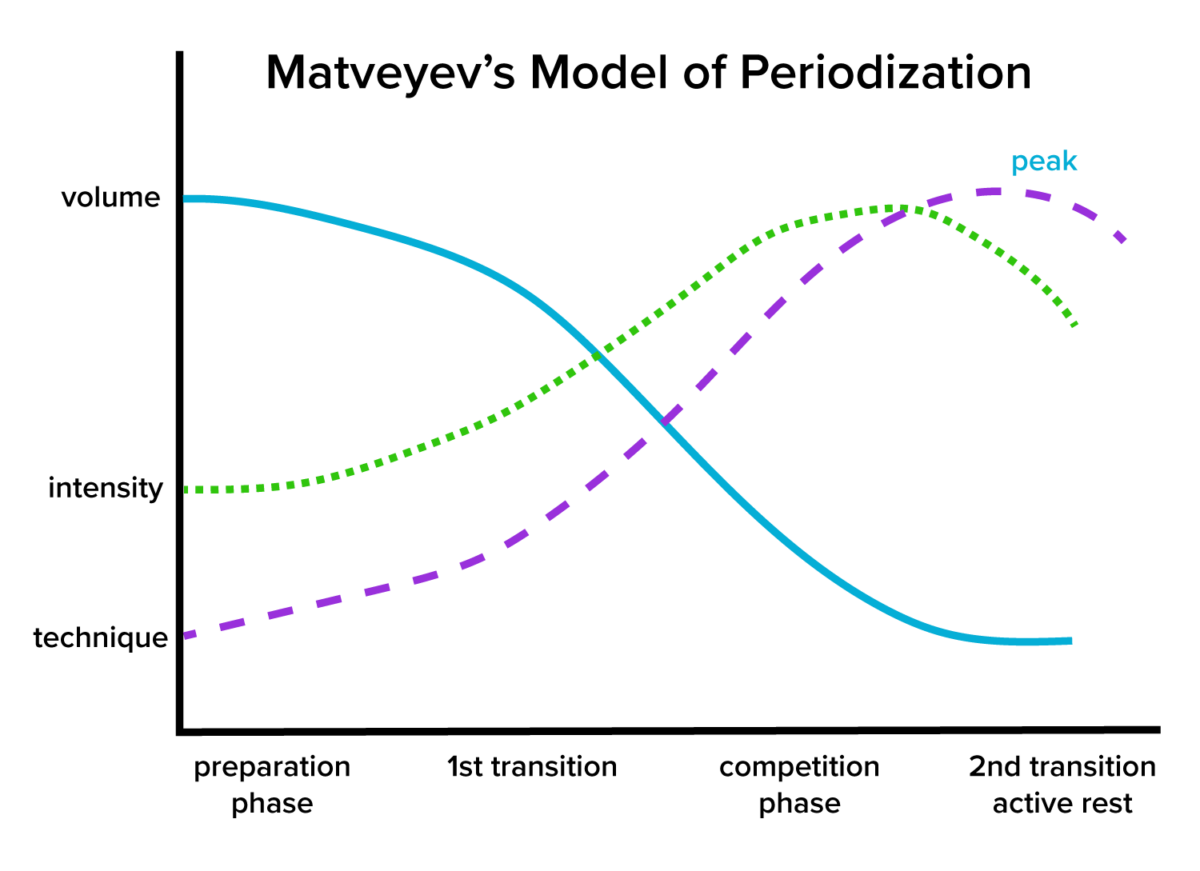
For strength sports such as football, during offseason training volume is kept relatively high and intensity and technique are relatively low. Meaning that athletes may perform higher repetition schemes with lighter weight while focusing less on sport specific skills. A general example of this may be to perform repetition ranges of 8-15 at approximately 60-75% intensity and 3-5 sets per exercise. Volume and intensity have an inverse relationship and as the offseason progresses and begins to near preseason, volume should begin to be reduced while intensity should begin to increase. Eventually you should get to the point where intensity becomes the dominant training variable. An example of this might be to perform 5-8 repetitions at 75-85% intensity and 4-6 sets per exercise. And again, as the preseason phase nears completion and the in-season phase begins, intensity will peak while volume bottoms out. An example of this may be to perform 3-5 repetitions at 85-92.5% intensity and 4-6 sets to maintain strength during the season. Finally, during post-season training, volume and intensity both drop allowing the body recovery time immediately following a long season. An example of this may be to perform 3-5 repetitions at 60-75% intensity for 1-2 sets per exercise.
These are just a few examples and ideas of how to design a training program for sport specific movements. First analyze the bioenergetic qualities of the sport. How long does my athlete need to be consistently moving to be at the peak of this sport? What key movement patterns does this sport or position within this sport require? How can we best train these qualities in the weight room? What part of the competitive season are you currently in? Do you need to include more volume and less intensity? Or do you need to transition to an intensity block with less volume? If you are in a position where you train athletes use the concepts covered in this article and if you have additional questions, feel free to reach out to myself or another trusted strength coach for more information.
References
- Stone, M and O’Bryant, HS. Weight training. In: A Scientific Approach. Minneapolis, MN: Burgess Publishing, 1987.
- Wilson, J. M., Marin, P. J., Rhea, M. R., Wilson, S. M., Loenneke, J. P., & Anderson, J. C. (2012). Concurrent training: a meta-analysis examining interference of aerobic and resistance exercises. The Journal of Strength & Conditioning Research, 26(8), 2293-2307.
